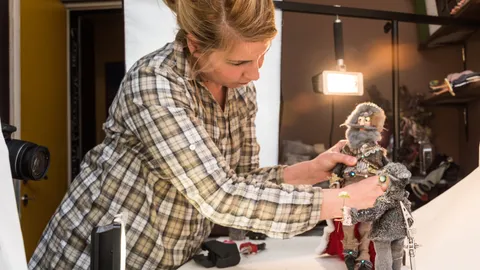Creating an immersive cinematic experience isn't solely about what audiences see on screen. Sound plays a significant role in filmmaking, helping to set the mood, build tension, and enhance storytelling. A crucial element of this is dialogue, which brings characters to life and drives the plot. However, capturing clean, clear dialogue during filming can be a challenge. That's where Automated Dialogue Replacement (ADR), also known as "looping" or "dubbing", comes in. ADR is the process of re-recording dialogue in post-production to improve audio quality or alter the original lines. This article explores the art of ADR in filmmaking.
When is ADR Necessary?
Various situations during production can necessitate the use of ADR. These can include:
- Background Noise: If a scene is shot in a noisy location where controlling ambient sound is impossible, it might be easier to re-record the dialogue in post-production.
- Technical Issues: Sometimes, there may be unexpected technical problems with the on-set audio equipment, leading to unusable sound.
- Performance Enhancement: ADR allows actors to enhance their performance, especially for scenes requiring high emotional intensity where perfect audio capture might be difficult during filming.
- Script Changes: If script changes are required after filming, ADR offers a solution to update the dialogue without reshooting the entire scene.
The Process of ADR
The process of ADR involves three main steps:
- Spotting Session: This is where the director, sound editor, and sometimes the actors review the film and decide which lines need to be re-recorded.
- Recording Session: During this stage, the actor watches the scene and listens to their original line (via an earpiece) to match the timing and emotional tone, then re-records the dialogue in a sound booth.
- Sync and Mix: The re-recorded dialogue is then synced with the actor's on-screen lip movements, and the sound levels are adjusted to match the other audio elements in the film.
READ MORE :
Video Marketing Strategy: The Ultimate Guide
How to Create the Perfect Promo Video
The Art of ADR
While ADR might seem like a technical process, it's also an art form that requires skill and creativity from both the actors and the sound team. Achieving a successful ADR session involves:
- Performance: The actors must recreate the emotional intensity of their performance in a sterile studio environment, often months after shooting the original scene.
- Timing: The actors must match the rhythm and pace of their original line to ensure the new dialogue syncs with their on-screen lip movements.
- Sound Design: The sound team must make the new dialogue sound as natural as possible, matching the acoustic qualities of the original location.
Automated Dialogue Replacement is a critical tool in a filmmaker's arsenal, allowing for the creation of a seamless and immersive audio landscape. Despite its technical challenges, when executed correctly, ADR can significantly enhance a film's narrative and emotional impact, recreating reality through the magic of sound.
Seeking more than just a video? Envision content that engages, resonates, and fuels your revenue growth. Step into the world of Video Production in Melbourne, Adelaide, and Sydney with Vimi, where we blend cinematic aesthetics with a keen business strategy.






